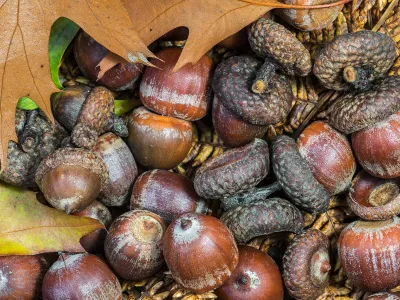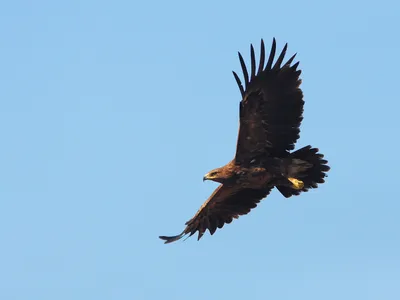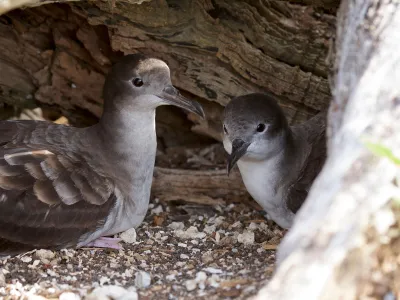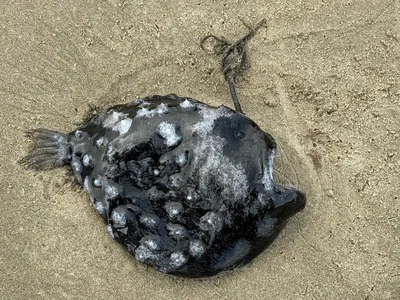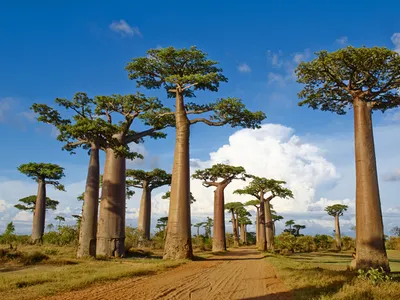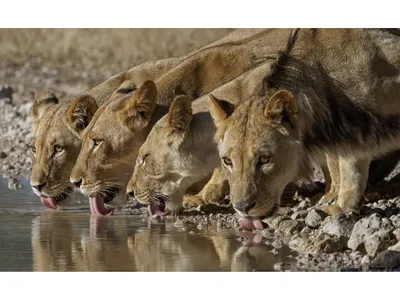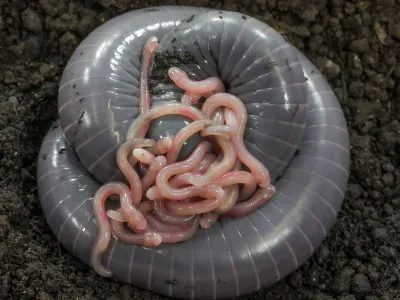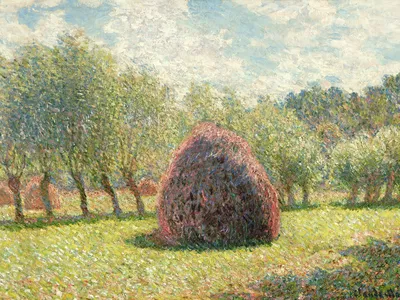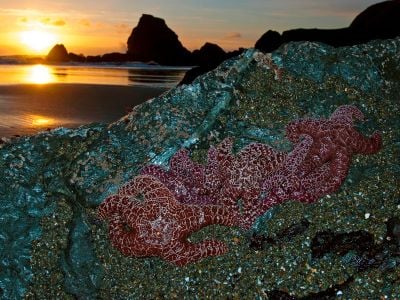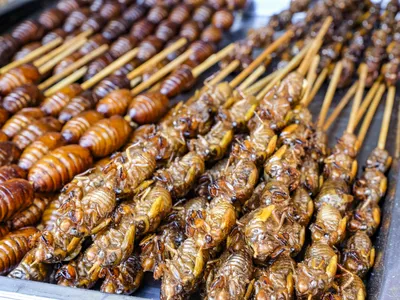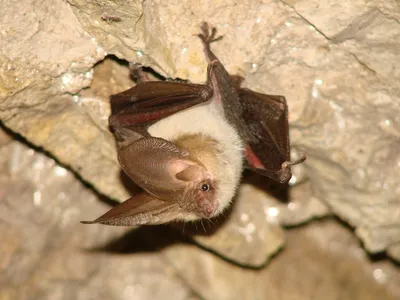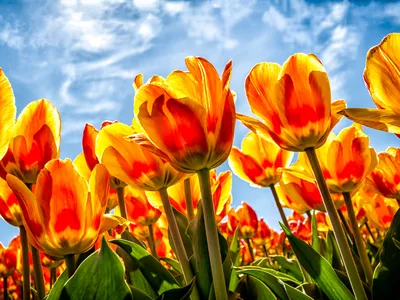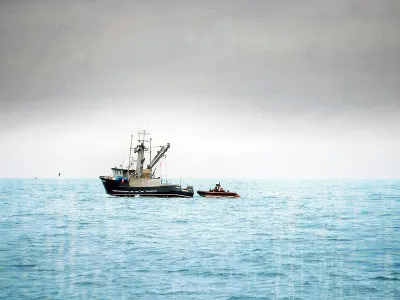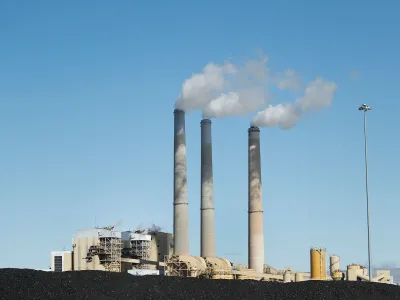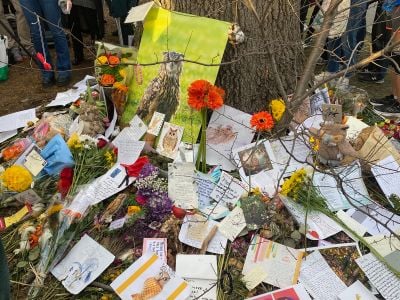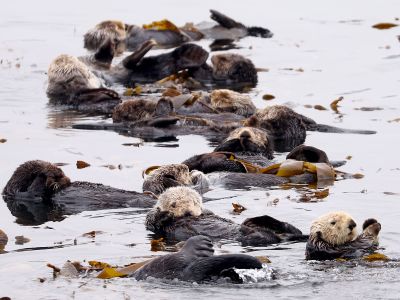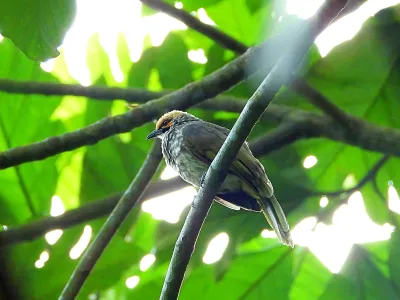Nature
Why Do Trees Drop So Many Seeds One Year, and Then Hardly Any the Next?
A new paper suggests that plants may use slow seed years to prevent the spread of disease
Imperiled Eagles Are Altering Their Migration Routes to Avoid the War in Ukraine
Researchers found that greater spotted eagles migrated longer distances and made fewer rest stops following Russia's invasion of Ukraine in 2022, compared to previous years
After Rats Were Eradicated From This Small Island, Seabirds Thrived
Tromelin Island became a safe place for birds once the invasive mammals were eliminated
Beachcombers Discover Rare, Deep-Sea Anglerfish Washed Up on Oregon Coast
Most humans will never see a Pacific footballfish, as the creatures live at depths of 2,000 to 3,300 feet below the ocean's surface
Scientists Uncover the Ancient Origins of Baobab Trees in Genetic Study
The trees originated in Madagascar 21 million years ago but later traveled long distances by way of ocean currents, according to new research
Get a Taste of South Africa Through These 15 Photos of Stunning Wildlife and Vibrant Communities
From desert landscapes to glittering beaches, see what this country has to offer
Inside the Wild Ways Many Creatures Make Milk
Mammals aren’t the only animals that provide nutritious secretions for their young
One of Monet's Late Haystack Paintings Could Sell for More Than $30 Million
The sale of "Meules à Giverny" (1893) will coincide with the 150th anniversary of the first Impressionist exhibition in Paris
Has the Term 'Keystone Species' Lost Its Meaning?
More than 50 years after Bob Paine’s experiment with starfish, hundreds of species have been pronounced “keystones” in their ecosystems
From Dinner Parties to Restaurants, Cicadas Are Landing in the Kitchen
Professional and amateur chefs nationwide are preparing to serve cicada dishes as the rare double brooding begins
How a Fantastical Labyrinth Became a Crucial Habitat for Europe’s Bats
After scientists documented the flying mammals in the Piusa Sand Caves, dug by miners a century ago, conservationists strove to protect the vital habitat
Looking for an Unexpected Place to Glimpse the Milky Way? Try Nebraska.
From ancient rock formations to tranquil rivers under the stars, Nebraska's dark skies offer a stellar experience a bit closer to home.
Celebrate Spring With Terrific Tulips
These 15 Smithsonian Magazine Photo Contest images give top billing to the beautiful blooms
How A.I. Is Revolutionizing Marine Conservation
Driven by a childhood marked by war and environmental devastation, marine scientist Dyhia Belhabib developed an innovative technology to combat illegal fishing
What Myths About the Anthropocene Get Wrong
These ten misconceptions underplay how much we have altered the global environment and undermine the new perspective we need to deal with a drastically changed world
What Flaco the Owl’s Death Teaches Us About Making Cities Safer for Birds
Ornithologists and conservationists say humans can take key steps to make urban environments less hazardous for our avian friends
Behold 15 Beautiful Photos of Cherry Blossoms in Bloom
These 15 picture-perfect cherry blossom images from the Smithsonian Magazine Photo Contest are pretty in pink
Sea Otters Have Helped Bolster California’s Kelp Forest
A study that looks back more than 100 years shows that where the animals have thrived, underwater forests have, too
How David Attenborough Went From Delighting at the Natural World to Pleading for Its Future
The environmental icon’s latest series, “Mammals,” showcases the threats humanity has created for our relatives
How Singapore Became an Unexpected Stronghold for a Critically Endangered Bird
Despite being the smallest country in Southeast Asia, the city-state is now home to the largest population of the straw-headed bulbul
Page 1 of 43
